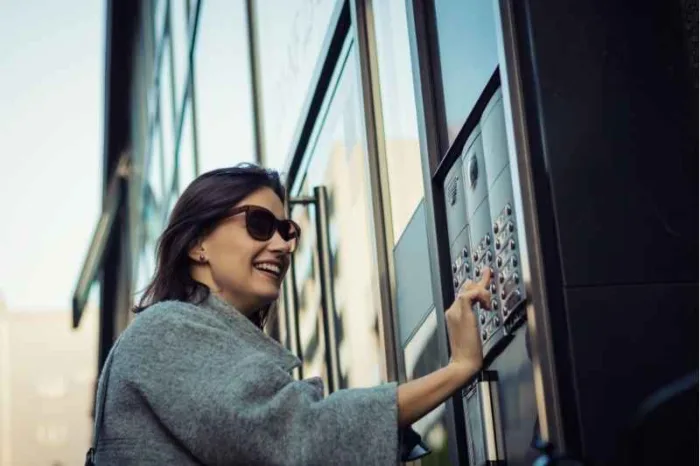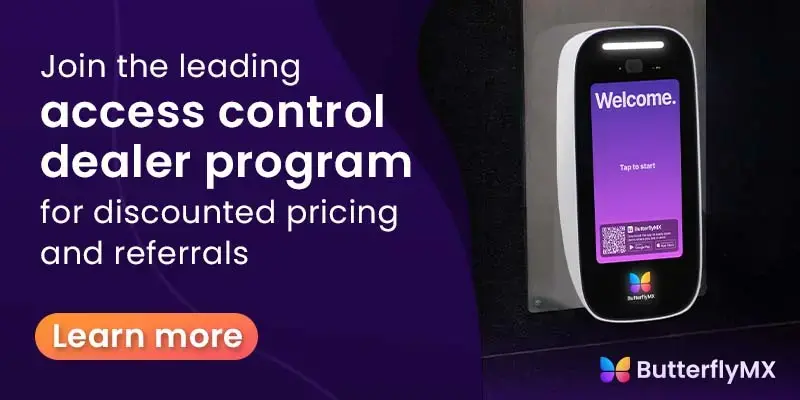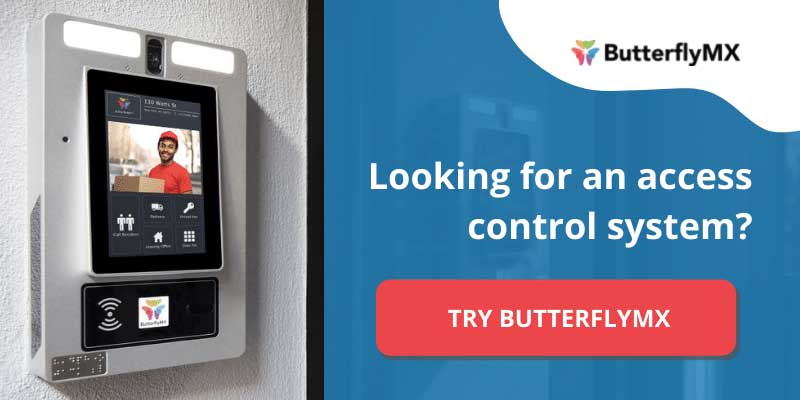Takeaways
- IP control is superior to a traditional, wired method of access control.
- An IP control system uses the internet and Internet Protocol to transmit data and enable devices to communicate wirelessly.
- IP control systems are simpler and more affordable to install. They’re also more convenient for staff and tenants to use.
- The best IP control systems include a mobile app for smartphone-based access and a built-in camera for video calls and added security.
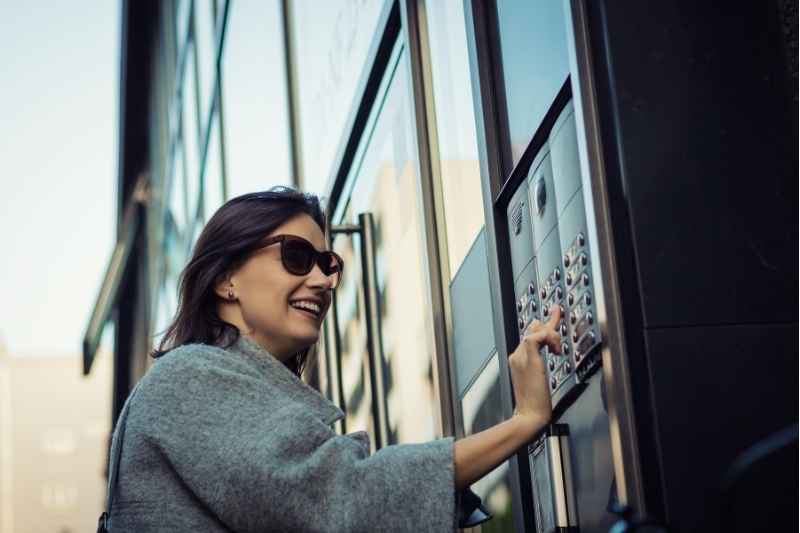
If you want to enhance your property’s access experience, it’s time to invest in an IP access control system. Property owners and operators all over the world use these internet-powered systems to secure their buildings and simplify access. Your building can also enjoy these benefits by investing in the right access control system.
In this post, we’ll go over what IP access control is and how it works. Then, we’ll show you how to choose the best system.
This post covers:
- What is IP access control?
- How does IP access control work?
- How is an IP control system better than a traditional access control system?
- The best IP control system
What is IP access control?
IP access control is a method of electronic access control that uses the internet and the Internet Protocol to verify credentials and ensure only authorized people can enter a building. An IP access system transmits a user’s credentials to a server, which then verifies those credentials.
Before the internet, access control systems were bulky, unwieldy, and expensive to maintain. They required you to run wiring throughout your building and connect every access device to a central control hub.
Now, thanks to the Internet of Things, many access control systems can even function wirelessly. And because IP-based access control systems use the internet to carry data instead of wires, they have the bandwidth for more complex data and features like video feeds.
Today, you can find IP-based door access control systems in all kinds of buildings, from office complexes to residential apartments.
IP control systems have 4 components:
- Access control reader. An IP-based access control reader is installed at an entryway. Tenants use the reader to scan their credentials and get into the building.
- Credentials. Residents present their access credentials to the access control reader to gain access. Examples of credentials include fobs, key cards, and smartphones
- Computer server. The server hosts the access software that manages a database of access credentials. When a user presents their access credential, the software compares it to the database. If the credential is a match, the server instructs the door strike to unlock. The software can be hosted on a server on-site or in the cloud.
- Electric door strike. The electric door strike receives signals to unlock when an authorized user scans their credential.
How does IP access control work?
IP access control works by using the internet to confirm a connection between an access reader and a credential.
Here’s how a resident uses an IP control system to enter their building:
- Resident presents their credential. IP door controllers can be configured to accept various types of credentials, such as key fobs and key cards, smartphones, and even fingerprints.
- Reader transmits credentials to computer server. When a resident scans their credential, the system takes that data, organizes it according to Internet Protocol rules, and sends it to the computer server hosting the access software.
- Computer software verifies resident’s credentials. If the resident’s credentials match up with the data stored in the software, the server directs the system to allow entry.
- System sends a signal to electric door strike. This allows the door to unlock, and the resident can enter.
Watch how ButterflyMX works:
How IP control systems transmit data
IP control involves transmitting data between a resident’s credential, an access reader, and a computer server. Depending on the type of system you have, that data could be as simple as a PIN code or as complex as real-time video footage.
To transmit data over the internet, IP control systems must first organize and package that data using a set of rules called protocols. The most important of these is the Internet Protocol that IP control systems are named after. Another set of important rules is the Transmission Control Protocol, or TCP, which is why some providers refer to these systems as TCP/IP access control systems.
A set of rules that specifically organizes audio data is called the Voice over Internet Protocol (VoIP). Door entry systems that are powered by the internet often use VoIP to enable telephone entry.
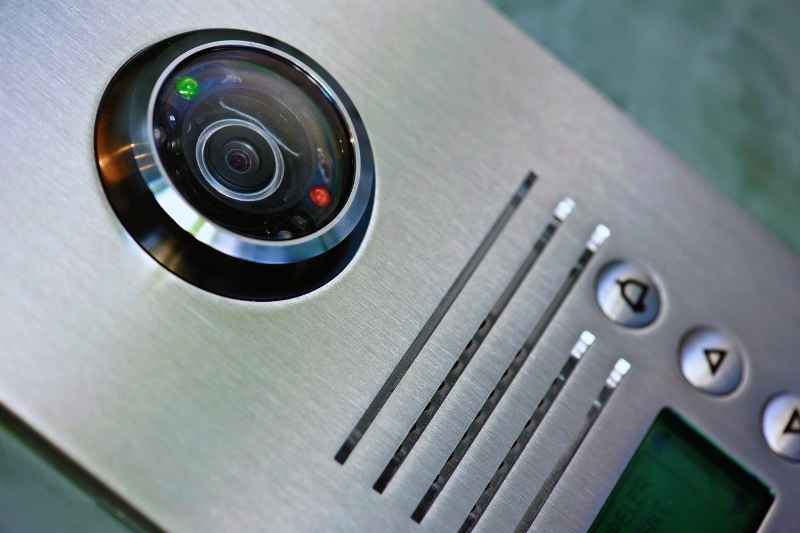
How is an IP control system better than a traditional access control system?
Compared to traditional access control systems, IP door access control systems are easier to install and use.
Easier to install
IP control systems only require two wires:
- Power over Ethernet (PoE) wire, which supplies both power and an internet connection
- A wire connecting the system to the door strike
With a wireless IP system, you don’t have to spend time and money ripping up floors and walls just to run wiring to each access reader throughout the building.
More convenient for residents
Residents will appreciate the internet connectivity of an IP control system. These systems offer more features, which add convenience for residents.
Some of these features include:
- Two-way video calling
- Integrations with smart building services, like smart locks and thermostats
- A mobile app so residents can open doors with their smartphones
- Delivery passes for easy courier access
- Multi-use Visitor Passes that residents can program to work at specific times
More convenient for staff
IP control systems save time and cut down on tedious tasks for property staff.
First, you can manage an IP access system remotely from a computer. This lets staff easily update the tenant directory, change access permissions, and view an audit trail of door releases without going onsite.
IP systems can also integrate with property management software (PMS). By connecting your access control system with your PMS, any changes you make to your rent roll will automatically reflect in your access system’s database. This saves you the time and hassle of changing access permissions when residents move in or out.
What is the best IP control system?
The best IP control systems maximize the user experience by offering smartphone-based access and video capabilities.
In an internet-connected world, there’s no tool that’s as simple, powerful, and popular as the smartphone. So, choose an access system with a mobile app that lets tenants open doors from their smartphones. Systems that depend on keycards or fobs force staff to constantly issue new credentials and replace lost ones.
An IP mobile access control system, however, ensures that residents will always have their keys while sparing property staff the burden — and cost — of replacing lost keys. The best IP access system also has a built-in camera. This allows residents to see who’s at the door or gate before granting access.
ButterflyMX IP access control
With more than 10,000 five-star ratings, ButterflyMX offers the best IP-based access control solution. With ButterflyMX’s IP intercom, you can simplify property access for your staff, your tenants, and even visitors and delivery carriers.
Tenants can open doors from anywhere using the ButterflyMX mobile app. They can also easily grant access to guests. Whether residents are assigning one-time delivery passes to couriers or recurring Visitor Passes to dog walkers, a variety of visitor management features are just one tap away.
For a fully integrated property access solution, add ButterflyMX keypads. These IP-based keypads are perfect for secondary entrances and interior doors, such as amenity spaces and staff-only rooms.
And property managers benefit from ButterflyMX, too. Building staff can easily manage the entire system from a web-based dashboard powered by the ButterflyMX OS.
